Discover 35 hidden attractions, cool sights, and unusual things to do in Buenos Aires (Argentina). Don't miss out on these must-see attractions: Casa Rosada, Museo Nacional de Bellas Artes, and Buenos Aires Metropolitan Cathedral. Also, be sure to include Palace of the Argentine National Congress in your itinerary.
Below, you can find the list of the most amazing places you should visit in Buenos Aires (Ciudad de Buenos Aires).
Table of Contents
Casa Rosada
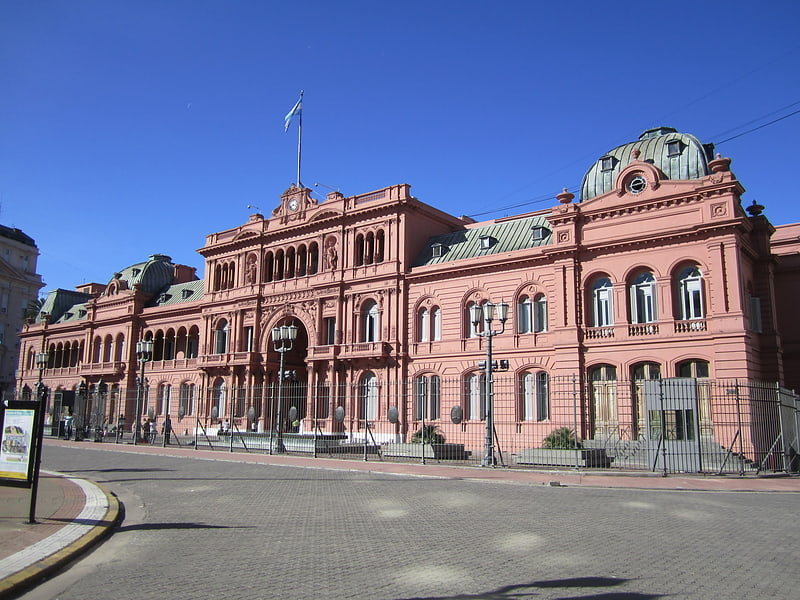
Famed presidential palace with tours. The Casa Rosada is the office of the President of Argentina. The palatial mansion is known officially as Casa de Gobierno. Normally, the President lives at the Quinta de Olivos, the official residence of the President of Argentina, which is located in Olivos, Greater Buenos Aires. The characteristic color of the Casa Rosada is baby pink, and is considered one of the most emblematic buildings in Buenos Aires. The building also houses a museum, which contains objects relating to former presidents of Argentina. It has been declared a National Historic Monument of Argentina.[1]
Address: Buenos Aires, Balcarce 50
Museo Nacional de Bellas Artes
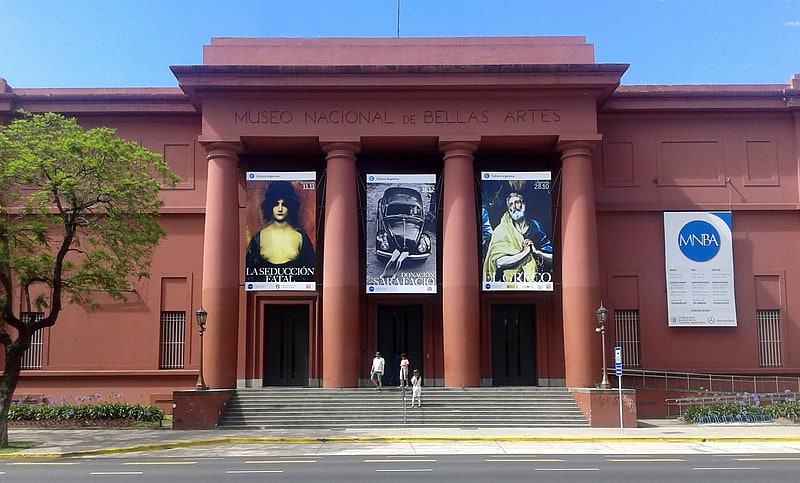
Museum in Buenos Aires, Argentina. The Museo Nacional de Bellas Artes is an Argentine art museum in Buenos Aires, located in the Recoleta section of the city. The Museum inaugurated a branch in Neuquén in 2004. The museum hosts works by Goya, Rembrandt, Van Gogh, Rodin, Manet and Chagall among other artists.[2]
Address: Avenida Del Libertador 1473, C1425AAA Buenos Aires
Buenos Aires Metropolitan Cathedral
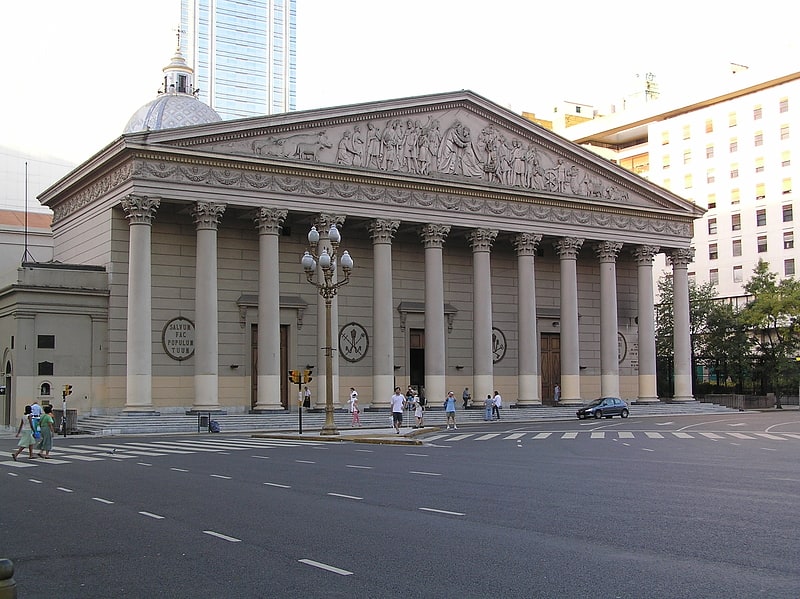
Also known as: Catedral metropolitana de Buenos Aires
Neoclassical Catholic cathedral. The Buenos Aires Metropolitan Cathedral is the main Catholic church in Buenos Aires, Argentina. It is located in the city center, overlooking Plaza de Mayo, on the corner of San Martín and Rivadavia streets, in the San Nicolás neighbourhood. It is the mother church of the Archdiocese of Buenos Aires and the primatial church of Argentina.
The Cathedral of Buenos Aires was rebuilt several times since its humble origins in the 16th century. The present building is a mix of architectural styles, with an 18th-century nave and dome and a severe, 19th-century Neoclassical façade without towers. The interior keeps precious 18th-century statues and altarpieces, as well as abundant Neo-Renaissance and Neo-Baroque decoration.[3]
Address: San Martín 27, C1004 CABA (Comuna 1)
Palace of the Argentine National Congress

Also known as: Palacio del Congreso de la Nación Argentina
Building in Argentina. The Palace of the Argentine National Congress is a monumental building, seat of the Argentine National Congress, located in the city of Buenos Aires. It is located in the barrio of Balvanera at its limit with Monserrat, an area informally known as the Congreso neighbourhood.
Constructed between 1898 and 1906, the palace is a National Historic Landmark. The Kilometre Zero for all Argentine National Highways is marked on a milestone at the Congressional Plaza, next to the building.[4]
Address: Av. Hipólito Yrigoyen 1849, C1033AAV CABA (Comuna 3)
Buenos Aires Cabildo
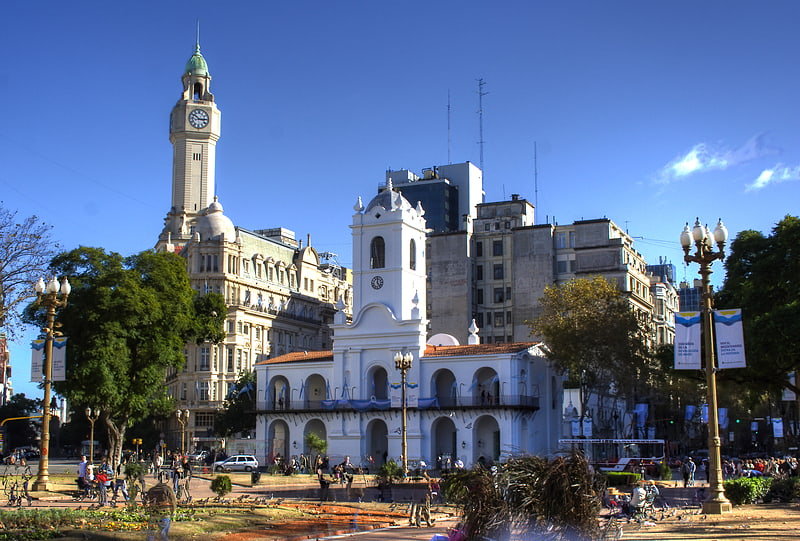
Also known as: Cabildo de Buenos Aires
Exhibits from 18th-century Argentina. The Cabildo of Buenos Aires is the public building in Buenos Aires that was used as seat of the town council during the colonial era and the government house of the Viceroyalty of the Río de la Plata. Today the building is used as a museum.[5]
Address: Buenos Aires, Bolívar 65
Plaza de Mayo

Iconic 19th-century central square. The Plaza de Mayo is a city square and main foundational site of Buenos Aires, Argentina. It was formed in 1884 after the demolition of the Recova building, unifying the city's Plaza Mayor and Plaza de Armas, by that time known as Plaza de la Victoria and Plaza 25 de Mayo, respectively. The city centre of Buenos Aires, Plaza de Mayo has been the scene of the most momentous events in Argentine history, as well as the largest popular demonstrations in the country. On the occasion of the first anniversary of the May Revolution in 1811, the Pirámide de Mayo was inaugurated in the square's hub, becoming Buenos Aires' first national monument.
It is located in the financial district known as microcentro, within the barrio (English: neighborhood) of Monserrat. It is bounded by Bolívar, Hipólito Yrigoyen, Balcarce and Avenida Rivadavia streets; and from its west side three important avenues are born: Avenida Presidente Julio Argentino Roca, Avenida Roque Sáenz Peña and Avenida de Mayo. In the square's surroundings are several significant monuments and points of interest: the Cabildo, the Casa Rosada (seat of the President of Argentina), the Metropolitan Cathedral, the Buenos Aires City Hall, and the Bank of the Argentine Nation's headquarters. Underneath its lands are the Underground stations of Plaza de Mayo (Line A), Catedral (Line D), and Bolívar (Line E).[6]
Address: Av. Hipólito Yrigoyen s/n, C1087 CABA (Comuna 1)
Florida Street
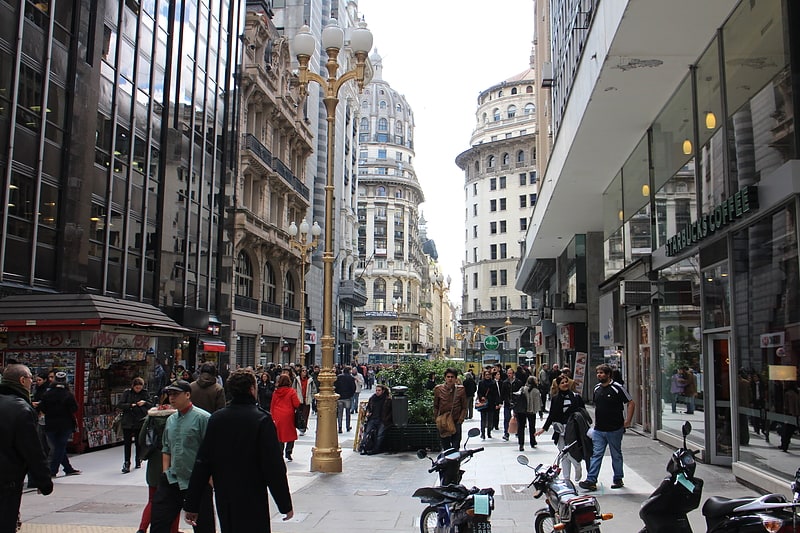
Also known as: Calle Florida
Street. Florida Street is a popular shopping street in Downtown Buenos Aires, Argentina. A pedestrian street since 1971, some stretches have been pedestrianized since 1913.
The pedestrian section as such starts at the intersection of Perú Street and Avenida de Mayo, a block north of the Plaza de Mayo; Perú Street crosses Rivadavia Avenue, and becomes Florida Street. Florida Street runs northwards for approximately one kilometer to Plaza San Martín, in the Retiro area. It intersects Buenos Aires's other pedestrian street, Lavalle, at the heart of the former cinema district.
Florida is one of the city's leading tourist attractions. Florida Street bustles with shoppers, vendors, and office workers alike because of its proximity to the financial district. By evening, the pace relaxes as street performers flock to the area, including tango singers and dancers, living statues, and comedy acts. Its variety of retail stores, shopping arcades, and restaurants is of great interest to foreign tourists and business travelers.[7]
Obelisco
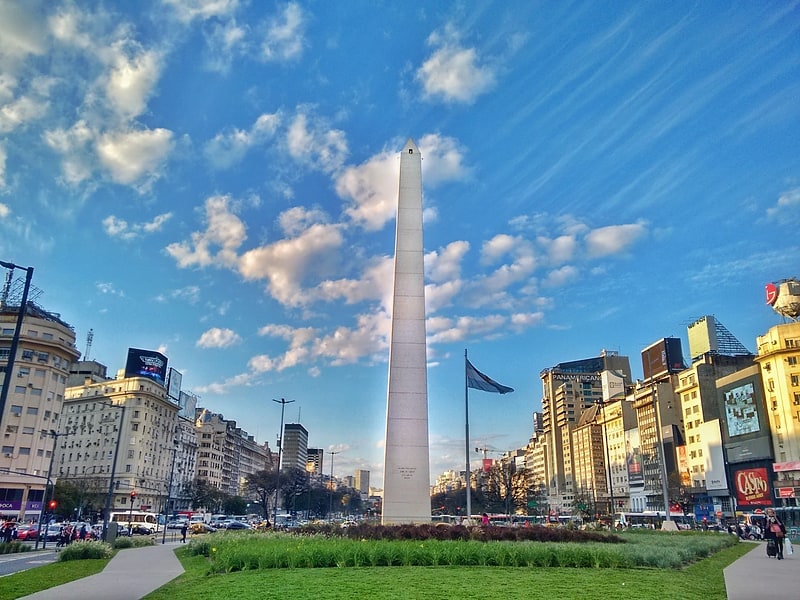
Iconic 67m-high white obelisk. The Obelisco de Buenos Aires is a national historic monument and icon of Buenos Aires. Located in the Plaza de la República in the intersection of avenues Corrientes and 9 de Julio, it was erected in 1936 to commemorate the quadricentennial of the first foundation of the city.[8]
Address: Avenida 9 de Julio s/n, C1073ABA Buenos Aires (Comuna 1)
Museo Argentino de Ciencias Naturales
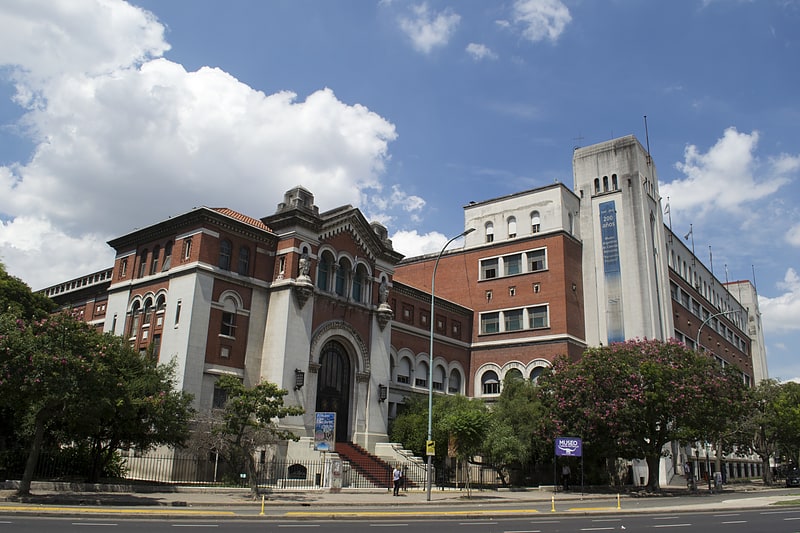
Museum with natural history exhibits. The Bernardino Rivadavia Natural Sciences Argentine Museum is a public museum located in the Caballito section of Buenos Aires, Argentina.[9]
Address: Av. Angel Gallardo 470, C1405 DJR
Palace of Running Waters
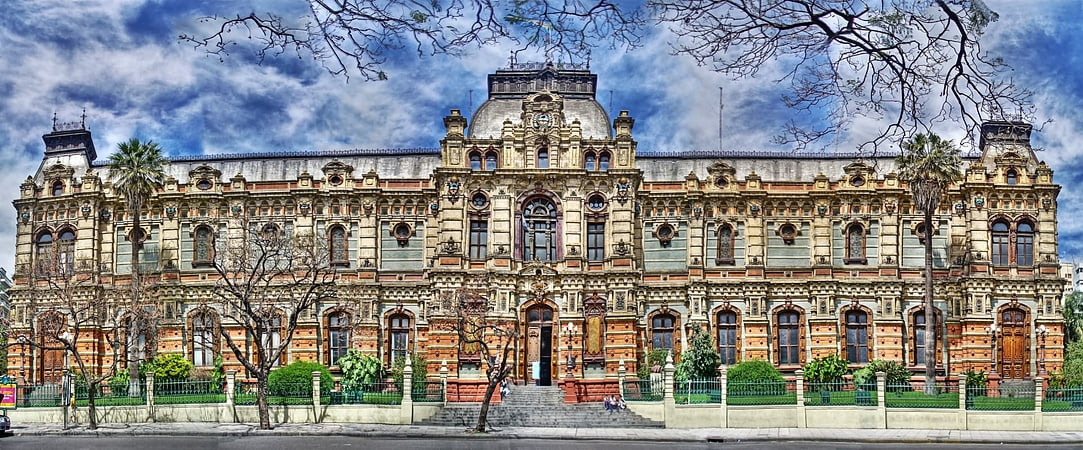
Also known as: Palacio de Aguas Corrientes
Heritage museum in Buenos Aires, Argentina. The Palace of Running Waters is an architecturally significant water pumping station in Buenos Aires, Argentina and the former headquarters of Obras Sanitarias de la Nación. It is currently administered by Agua y Saneamientos Argentinos.[10]
Address: Riobamba 750, C1025 ABP (Comuna 3)
Museo Histórico Nacional
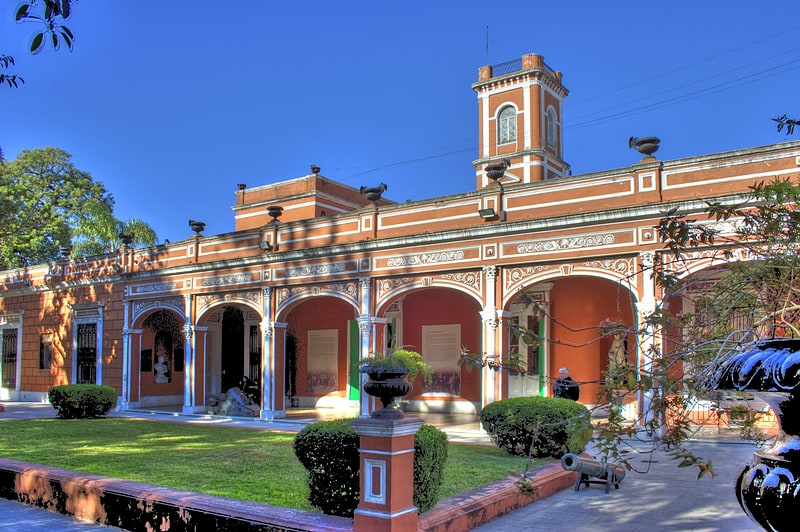
Argentine history in an elegant mansion. The Argentine National Historical Museum is located in Buenos Aires, Argentina, and is a museum dedicated to the history of Argentina, exhibiting objects relating to the May Revolution and the Argentine War of Independence.[11]
Address: Defensa 1600, C1143 CABA (Comuna 1)
Teatro Colón

Classic, ornate performing-arts theater. The Teatro Colón is the main opera house in Buenos Aires, Argentina. It is considered one of the ten best opera houses in the world by National Geographic, and is acoustically considered to be amongst the five best concert venues in the world.
The present Colón replaced an original theatre which opened in 1857. Towards the end of the century it became clear that a new theatre was needed and, after a 20-year process, the present theatre opened on 25 May 1908, with Giuseppe Verdi's Aïda.
The Teatro Colón was visited by the foremost singers and opera companies of the time, who would sometimes go on to other cities including Montevideo, Rio de Janeiro and São Paulo.
After this period of huge international success, the theatre's decline became clear and plans were made for massive renovations. After an initial start of works to restore the landmark in 2005, the theatre was closed for refurbishment from October 2006 to May 2010. It re-opened on 24 May 2010, with a programme for the 2010 season.[12]
Address: Calle Cerrito 628, C1010AAN Buenos Aires (Comuna 1)
Colección de Arte Amalia Lacroze de Fortabat
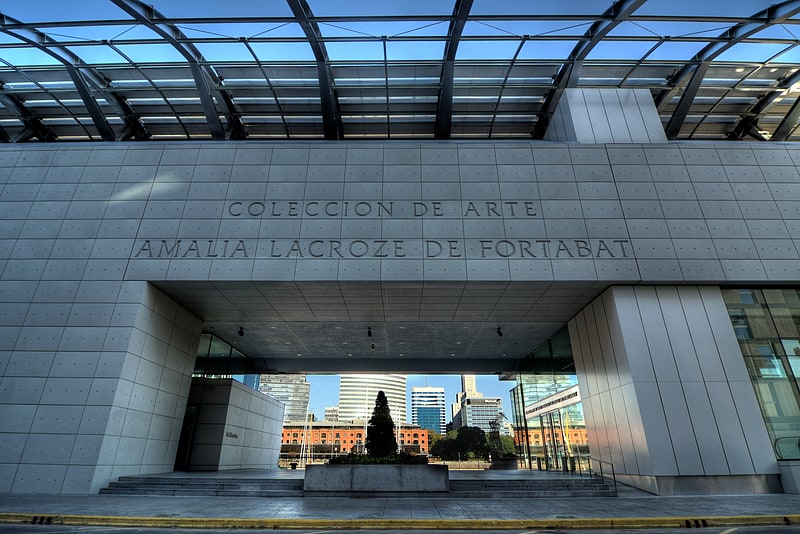
Museum in Buenos Aires, Argentina. The Amalia Lacroze de Fortabat Art Collection is a museum of fine arts in Buenos Aires, Argentina.[13]
Address: Olga Cossettini 141, C1107CCC CABA (Comuna 1)
La Recoleta Cemetery
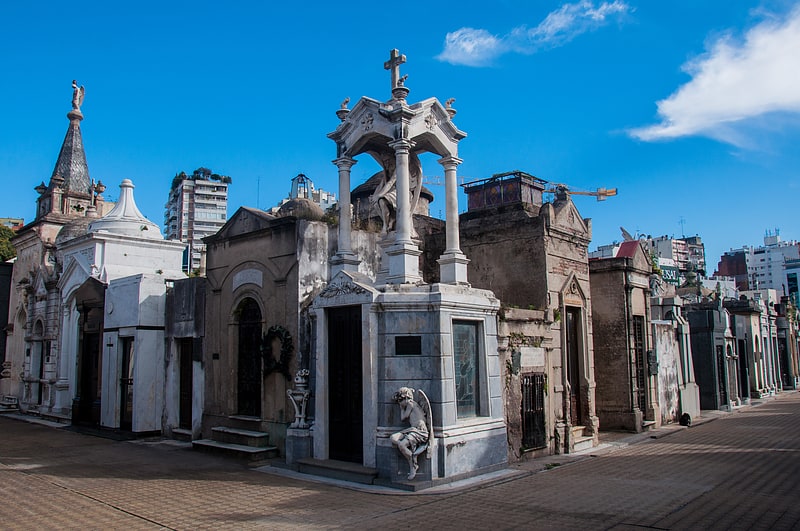
Also known as: Cementerio de la Recoleta
Art-rich site with famous mausoleums. La Recoleta Cemetery is a cemetery located in the Recoleta neighbourhood of Buenos Aires, Argentina. It contains the graves of notable people, including Eva Perón, presidents of Argentina, Nobel Prize winners, the founder of the Argentine Navy, and military commanders like Julio Argentino Roca. In 2011, the BBC hailed it as one of the world's best cemeteries, and in 2013, CNN listed it among the 10 most beautiful cemeteries in the world.[14]
Address: Junín 1760, C1113 CABA
National Museum of Decorative Arts
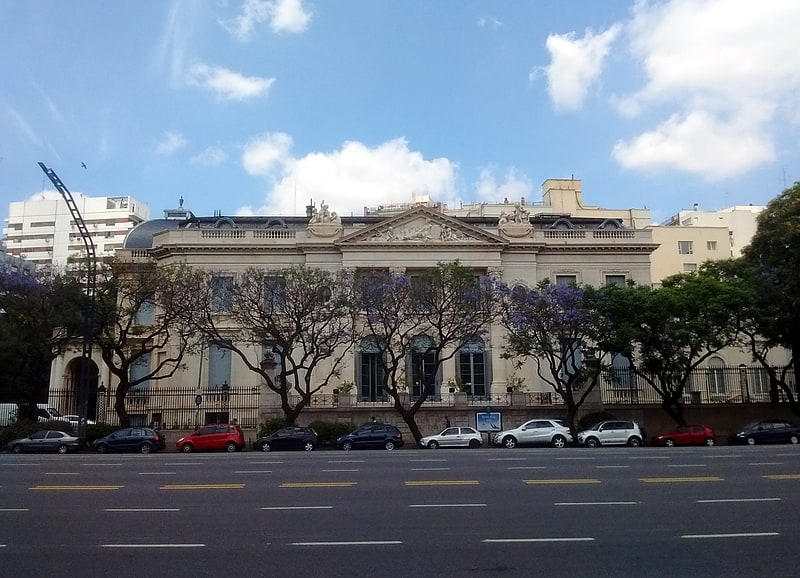
Also known as: Museo Nacional de Arte Decorativo
Wide-ranging artworks in a grand setting. The National Museum of Decorative Arts is an art museum in Recoleta, Buenos Aires, Argentina.[15]
Address: Av. del Libertador 1902, C1425 CABA
Galileo Galilei Planetarium
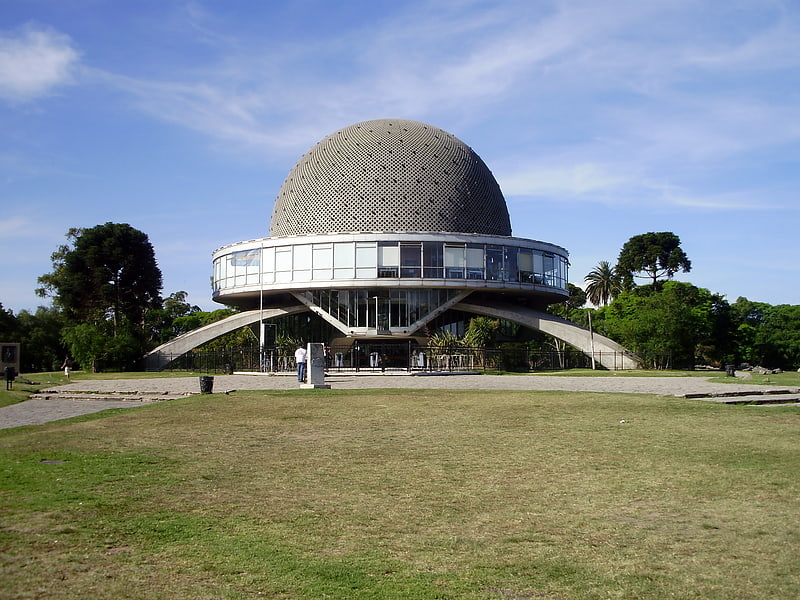
Also known as: Planetario Galileo Galilei
Astronomical displays and exhibitions. The Galileo Galilei planetarium, commonly known as Planetario, is located in Parque Tres de Febrero in the Palermo district of Buenos Aires, Argentina.[16]
Address: Av. Sarmiento s/n, C1425 CABA
Puente de la Mujer
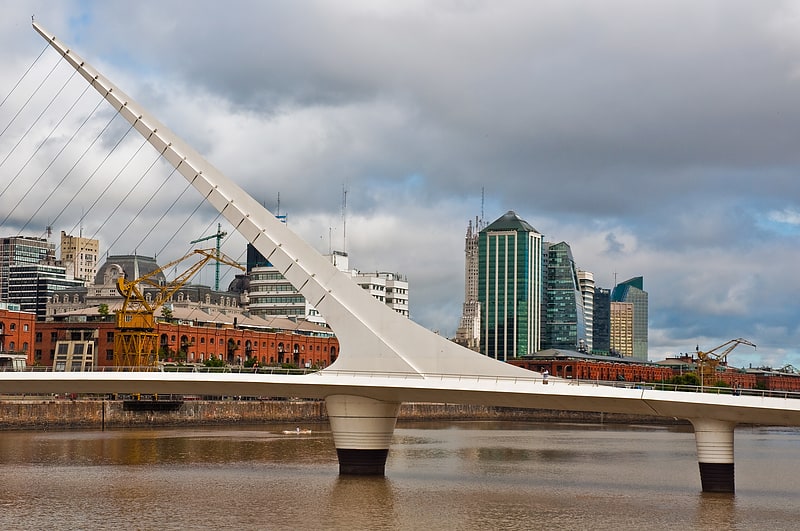
Landmark rotating footbridge. Puente de la Mujer, is a rotating footbridge for Dock 3 of the Puerto Madero commercial district of Buenos Aires, Argentina. It is of the cantilever spar cable-stayed bridge type and is also a swing bridge, but somewhat unusual in its asymmetrical arrangement. It has a single mast with cables suspending a portion of the bridge which rotates 90 degrees in order to allow water traffic to pass. When it swings to allow watercraft passage, the far end comes to a resting point on a stabilizing pylon.[17]
Address: Dique 3, Buenos Aires (Comuna 1)
MALBA
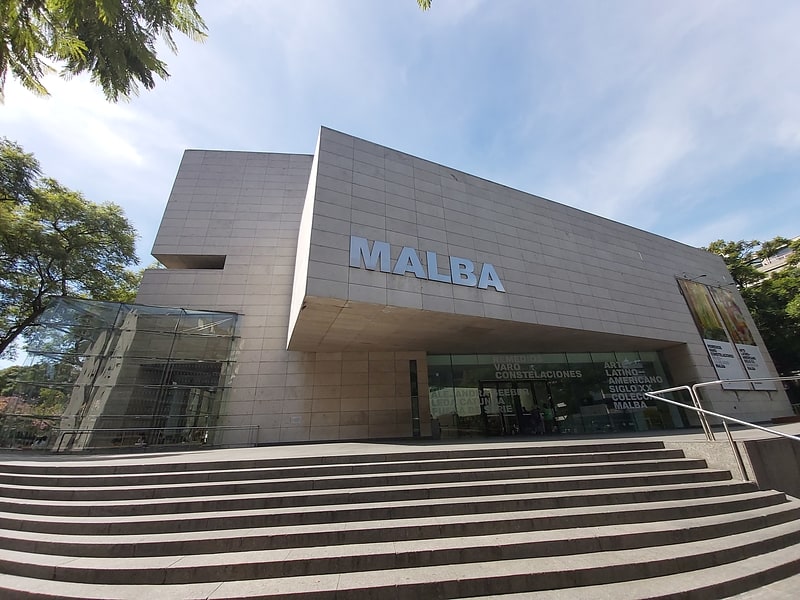
Also known as: Museo de Arte Latinoamericano de Buenos Aires
Contemporary site for Latin American art. The Latin American Art Museum of Buenos Aires is a museum located on Figueroa Alcorta Avenue, in the Palermo section of Buenos Aires.
Created by Argentine businessman Eduardo Costantini, the museum is operated by the not-for-profit Fundación MALBA – Costantini, and was inaugurated on September 21, 2001. The institution was organized around the Costantini Collection, and has continued to expand its selection of works from modern artists across Latin America. It also maintains a cultural center, which stages art and film exhibitions and develops cultural activities. The museum receives over a million visitors annually, and is sustained by over 1,400 active patrons.
The museum design was made through an open call contest.; 450 proposals from 45 countries were presented. The selection was made by an international jury of architects, and the first prize was awarded to three young Argentinian architects: Gaston Atelman, Martin Fourcade and Alfredo Tapia. The building project was executed by AFT Architects, an Argentine architectural firm.
The mission of the MALBA is to collect, preserve, research and promote Latin American art from the onset of the 20th century to the present. This involves educating the public about Latin American artists, and the diversity of cultural and artistic holdings in this region.[18]
Address: Av. Pres. Figueroa Alcorta 3415, C1425 CLA
San Martín Palace
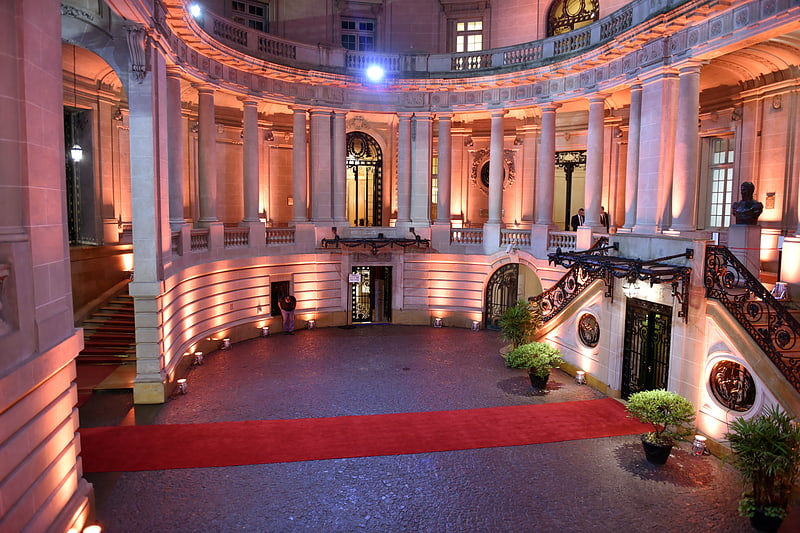
Also known as: Palacio San Martín
Classical 1909 government building. San Martín Palace is located facing Plaza San Martín in the Retiro neighbourhood of Buenos Aires, Argentina and serves as the Ceremonial Headquarters for the Ministry of Foreign Relations.[19]
Address: Arenales 761, C1061AAA Buenos Aires (Comuna 1)
Museo de Artes Plásticas Eduardo Sívori
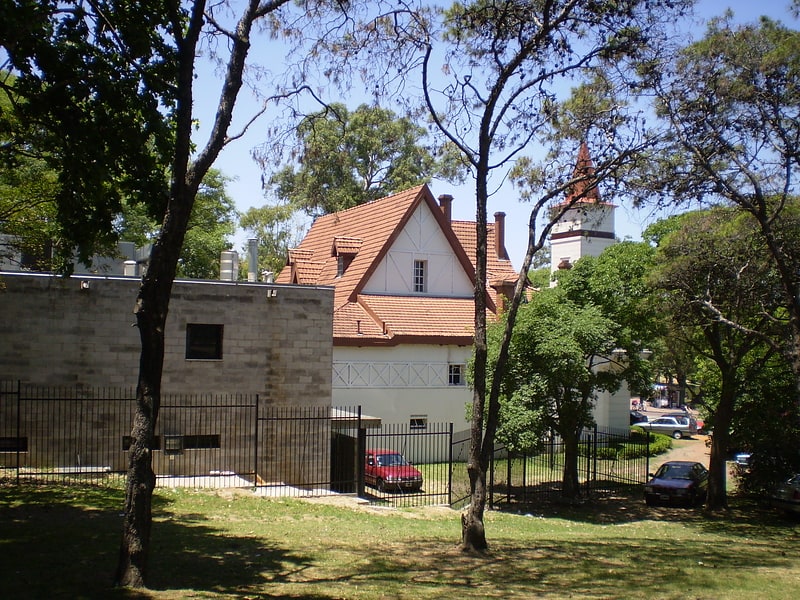
Museum in Buenos Aires, Argentina. The Eduardo Sívori Museum is a municipal art museum in Buenos Aires, Argentina.[20]
Address: Avenida Infanta Isabel 555, C1425CHA Buenos Aires
Torre Monumental

Clock tower commemorating independence. Torre Monumental, formerly known as Torre de los Ingleses, is a clock tower located in the barrio of Retiro in Buenos Aires, Argentina. It is situated in the Plaza Fuerza Aérea Argentina by San Martín Street and Avenida del Libertador. It was a gift from the local British community to the city in commemoration of the centennial of the May Revolution of 1810.
After the Falklands War in 1982, the tower's original name was dropped, though some still call it Torre de los Ingleses.[21]
Address: Avenida Del Libertador 49, C1001ABA Buenos Aires (Comuna 1)
Abasto Shopping
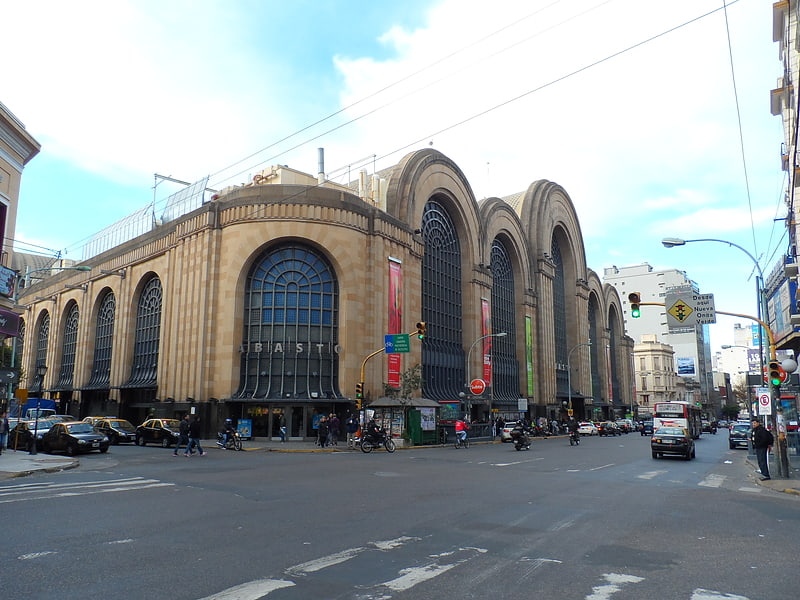
Also known as: Abasto de Buenos Aires
Shopping mall in Buenos Aires, Argentina. The Abasto Shopping is one of the biggest shopping mall centers in Buenos Aires, Argentina. The building was the central wholesale fruit and vegetable market in the city from 1893 to 1984. Since 1999, it has served as a shopping mall. It is also famous for being in the area where the tango singer Carlos Gardel, known as El Morocho del Abasto, lived for most of his life. Today, the surrounding area, though part of the Balvanera neighbourhood, is sometimes referred to as Abasto.
The Abasto Shopping centre is served by the adjoining underground station Carlos Gardel of line B metro (subte).[22]
Address: Buenos Aires, Av. Corrientes 3247
Museo de Arte Español Enrique Larreta

Museum in Buenos Aires, Argentina. The Museo de Arte Español Enrique Larreta is a museum of Spanish art located in the Belgrano ward of Buenos Aires, Argentina.[23]
Address: Juramento 2291, C1428 CABA (Comuna 13)
Buenos Aires Zoo
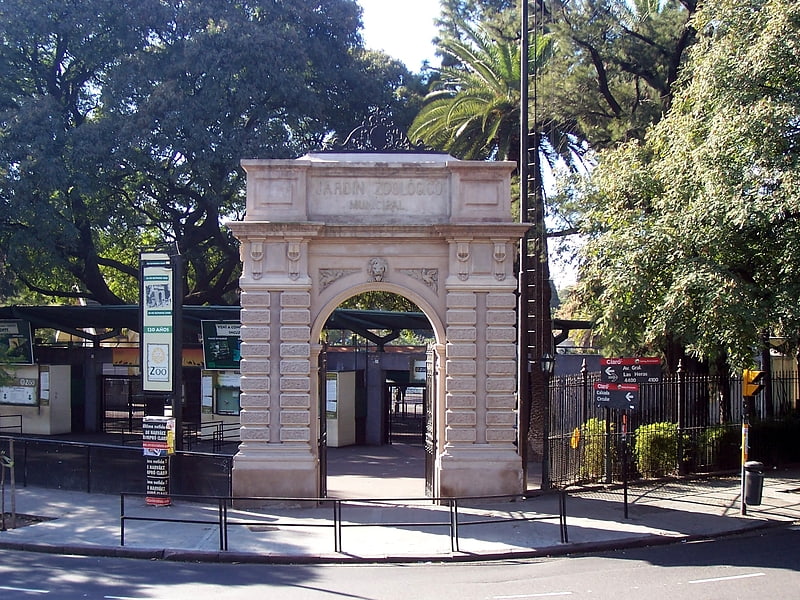
Also known as: Zoológico de Buenos Aires
Zoo. The Buenos Aires Eco Park is an 45-acre park in the Palermo district of Buenos Aires, Argentina. The former zoo, opened in 1888, contained 89 species of mammals, 49 species of reptiles and 175 species of birds, with a total of over 2,500 animals. The institution's goals are to conserve species, produce research and to educate the public. In June 2016 the city formed a bias about the zoo's cruelty. They had to close the 140-year-old zoo and relocate most of the animals to nature reserves, including Temaikèn. The zoo property will be converted into an ecopark.
The zoo closed in 2016, reopening as an ecopark in 2018. Its more than 40 historic buildings (that had been declared historical heritage) were refurbished, including the arc at the main entrance, the parrots pavilion, the byzantine ruins, the Confitería del Aguila, and the herons bridge, among others.[24]
Equestrian monument to General Manuel Belgrano
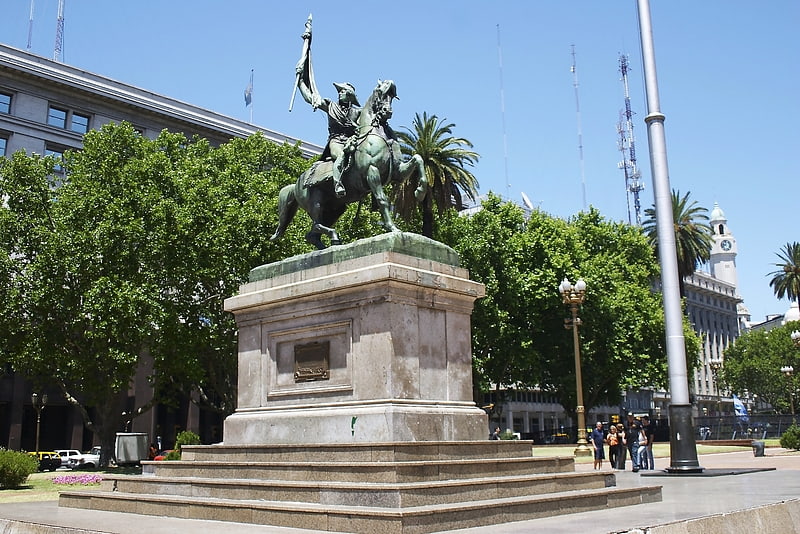
Also known as: Monumento ecuestre al General Manuel Belgrano
Monument in Buenos Aires, Argentina. The Equestrian monument to General Manuel Belgrano is a landmark of Buenos Aires, Argentina. It is located at Plaza de Mayo, in front of the Casa Rosada. It depicts General Manuel Belgrano holding the Flag of Argentina, and it is made of bronze over a pedestal of granite.[25]
Paseo La Plaza
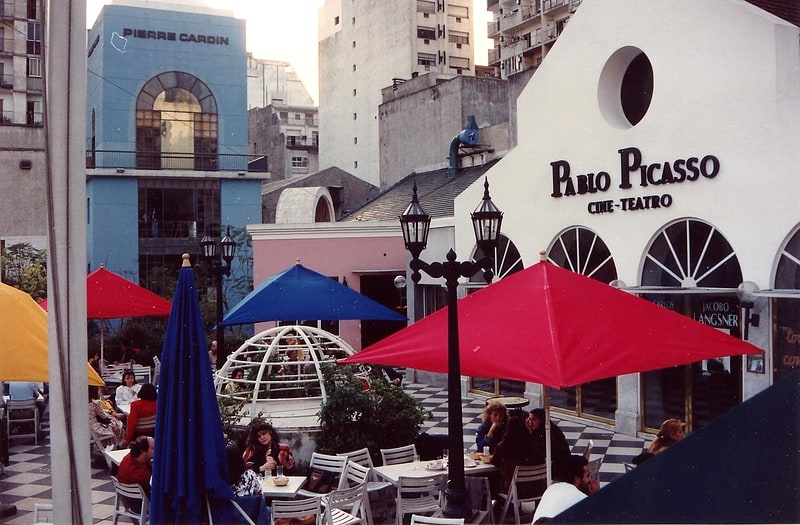
Cultural center in Buenos Aires, Argentina. Paseo La Plaza is a cultural and commercial complex in the San Nicolás section of Buenos Aires, Argentina.[26]
Address: Avenida Corrientes 1660, C1042AAP Buenos Aires (Comuna 1)
Parque de la Ciudad
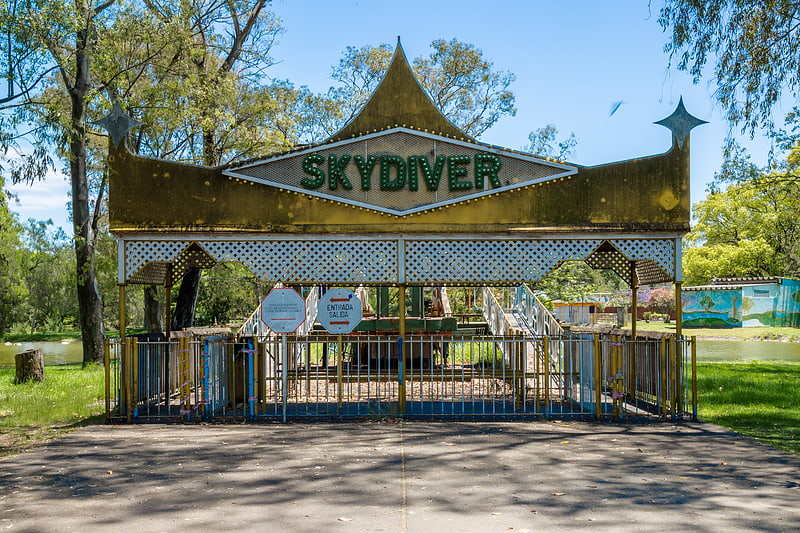
Amusement park in Buenos Aires, Argentina. The Parque de la Ciudad is a former amusement park in the Villa Soldati neighborhood of Buenos Aires, Argentina.[27]
Palermo
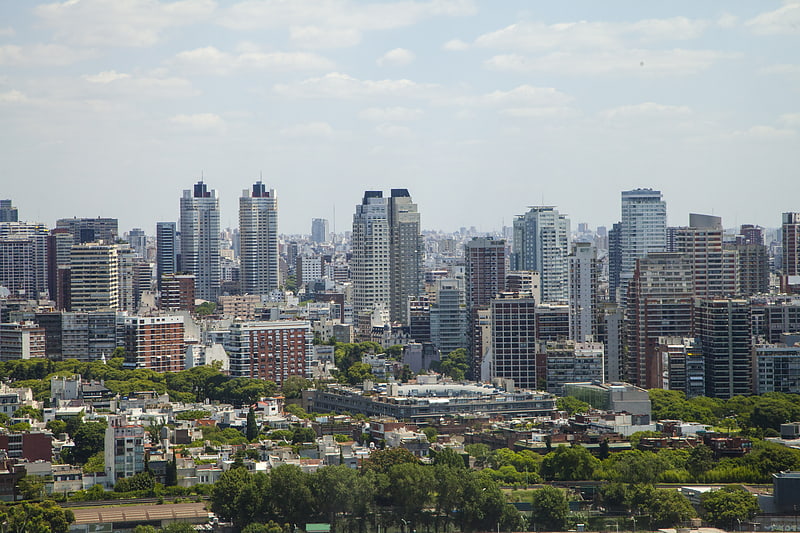
Neighborhood in Buenos Aires, Argentina. Palermo is a barrio or neighborhood of Buenos Aires, Argentina. It is located in the north of the city, near the Rio de la Plata.
With a total land area of 17.4 km², Palermo is a rather sprawling area. It had a population of 256,927 inhabitants. It is the only barrio within the administrative division of Comuna 14.
Palermo is perhaps best known as the polo capital of the world. Each year, in November, the city hosts the Argentine Polo Open, commonly known as the Palermo Open.[28]
Harrods
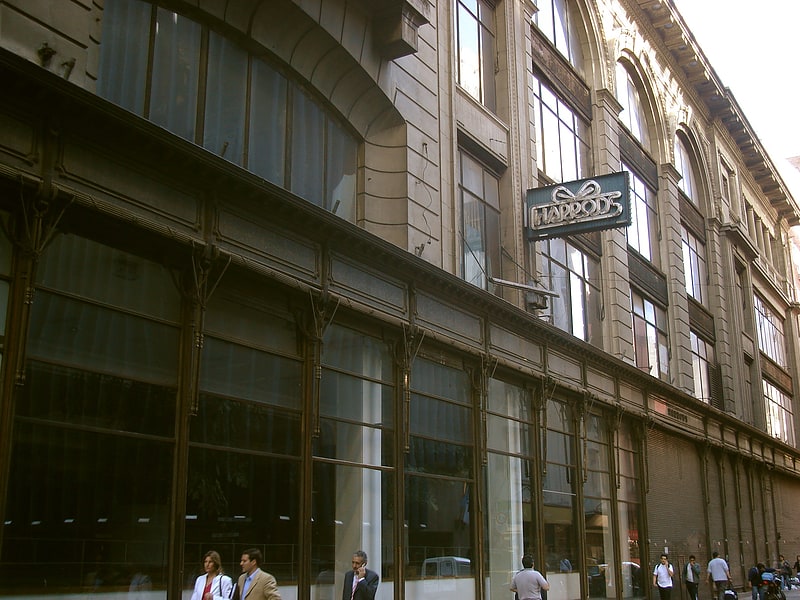
Shopping mall in Buenos Aires, Argentina. Harrods Buenos Aires is a historic commercial building in Buenos Aires, Argentina, formerly a branch of Harrods of London.[29]
Centro Cultural Recoleta
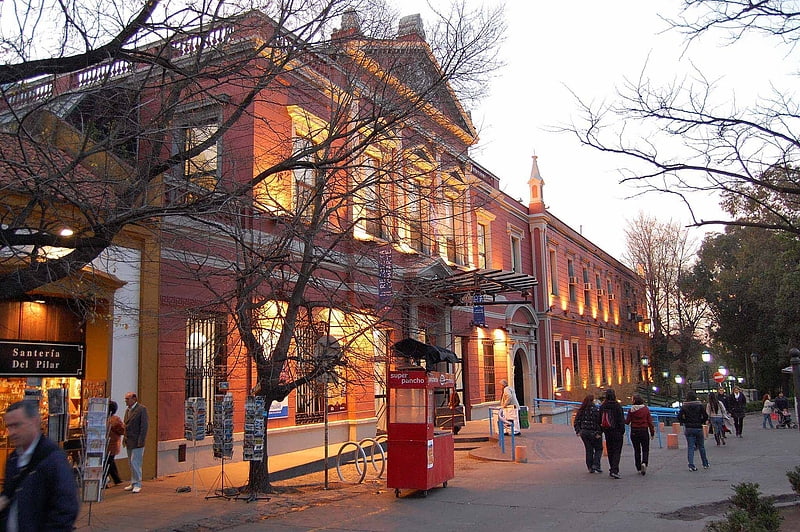
Cultural center in Buenos Aires, Argentina. The Recoleta Cultural Centre is an exhibition and cultural events centre located in the barrio of Recoleta, Buenos Aires, Argentina. It holds sculptures and exhibitions, as well as concerts and artistic presentations and workshops of diverse types. in September/October 2006 it held the wildly successful onedotzero festival attracting over 20,000 people in 3 days for installations, live performances, screenings and music.[30]
Address: Junín 1930, 1113 Buenos Aires
Parque Lezama
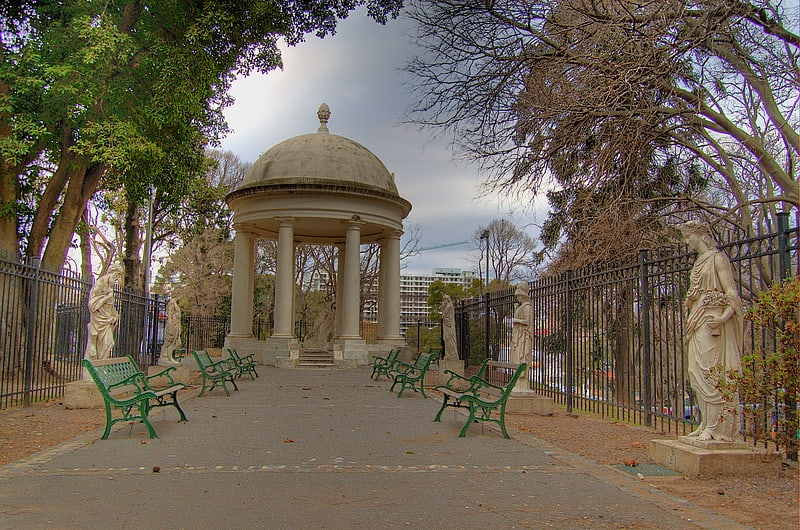
Leafy city park with statues and monuments. Lezama Park is a public park in the San Telmo district of Buenos Aires, Argentina.[31]
Address: e/ Av. Martín García y Av. Brasil, C1165ABO San Telmo (Comuna 1)
Palacio Barolo
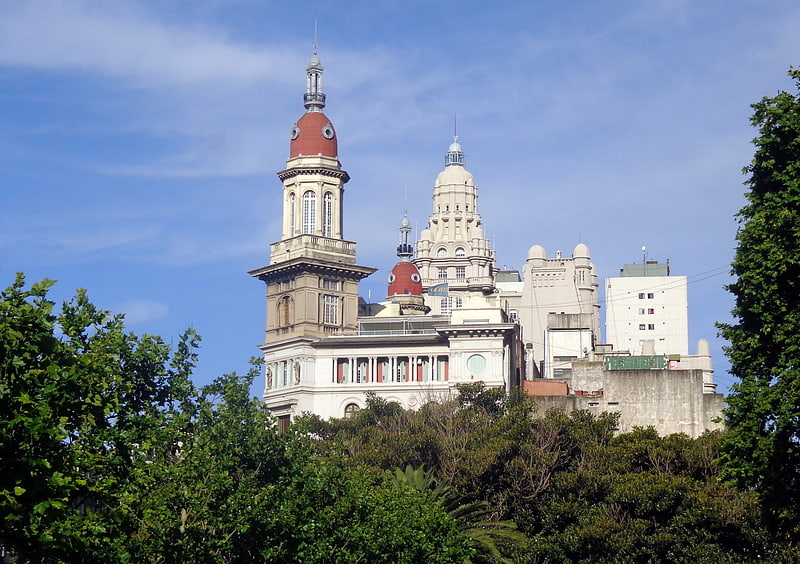
Striking office building opened in 1923. Palacio Barolo is a landmark office building, located at 1370 Avenida de Mayo, in the neighborhood of Montserrat, Buenos Aires, Argentina. It stood as Buenos Aires' tallest building for more than a decade until the construction of the Kavanagh Building in 1936. Its twin brother, Palacio Salvo, is a building designed and erected in Eclectic style, built by the same architect in Montevideo.
This building was declared a national historic monument in 1997. Currently, the building has several travel agencies, a Spanish school for foreigners, a store that sells clothes for tango, offices and studios of architects, accountants, lawyers, and designers.[32]
Address: Buenos Aires, Avenida de Mayo 1370
Fundación Proa
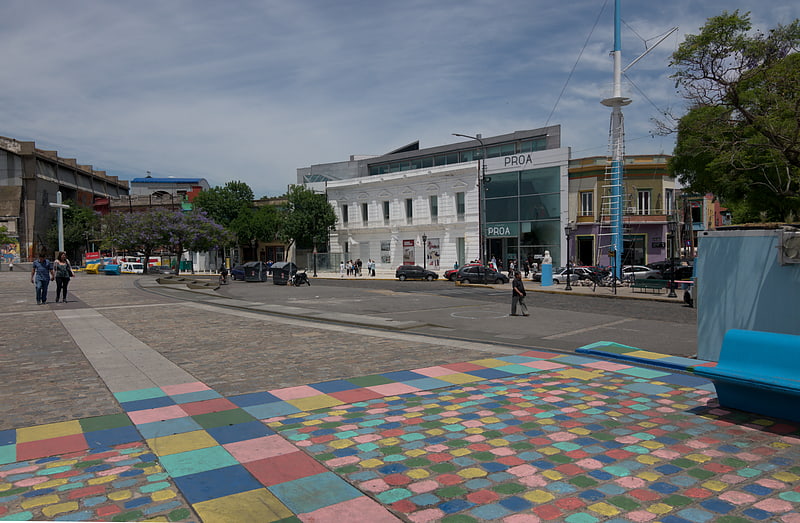
Art institute in Buenos Aires, Argentina. The Fundación Proa is a private art center in La Boca, Buenos Aires, Argentina. It was founded in 1996 and develops educational programs and exchange with cultural institutions. His focus is on the dissemination of the great artistic movements of the twentieth century.
The foundation is located at Pedro de Mendoza Avenue, 1929.[33]
Address: Av. Don Pedro de Mendoza 1929, C1169 CABA (Comuna 4)
Puente Transbordador
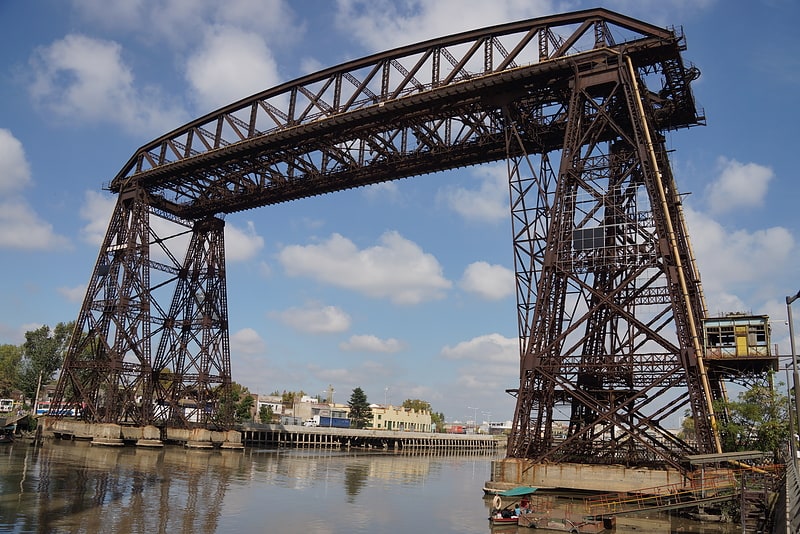
Transporter bridge in Buenos Aires, Argentina. Puente Transbordador is a transporter bridge in Buenos Aires, Argentina. The bridge was in use from its completion in 1914 until 1960, when operation ceased until 2017. Since 1999 the bridge is a National Historic Monument of Argentina.
The transporter bridge was the first link to connect Buenos Aires with the outskirts on the other side of the Riachuelo River. The bridge links the Avenida La Plata in the neighbourhood Island Maciel of Dock Sud with Avenida Almirante Brown in the La Boca neighbourhood of Buenos Aires.
The name of the bridge refers to Nicolás Avellaneda, a former president of Argentina, who also gave the name to the Avellaneda Partido on the right bank of the river.
The platform of the transporter bridge measured 8 by 12 metres and could be operated from a control stand on itself or from the machine house. It was designed to carry pedestrians, carts, cars and trams.[34]
Monumento de los Españoles
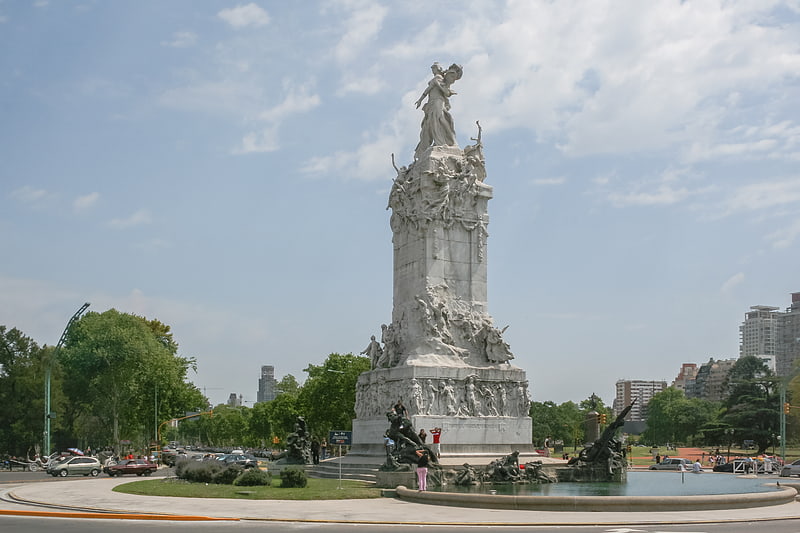
Also known as: Monumento de los españoles
Sculpture by Agustí Querol Subirats and Cipriano Folgueras Doiztúa. The Monument to the Carta Magna and Four Regions of Argentina is located in the intersection of Del Libertador and Sarmiento Avenues, a landmark site in the Palermo, a neighbourhood of Buenos Aires, Argentina. It is commonly referred to as the Monument of the Spanish.
The monument was a donation from the Spanish community in celebration of the centenary of the Revolución de Mayo of 1810 (which marked the formal beginning of Argentina's independence from Spain). It was built entirely in bronze and Carrara marble. The sculpture was finalized in 1927.[35]
Address: Av. Del Libertador, Buenos Aires